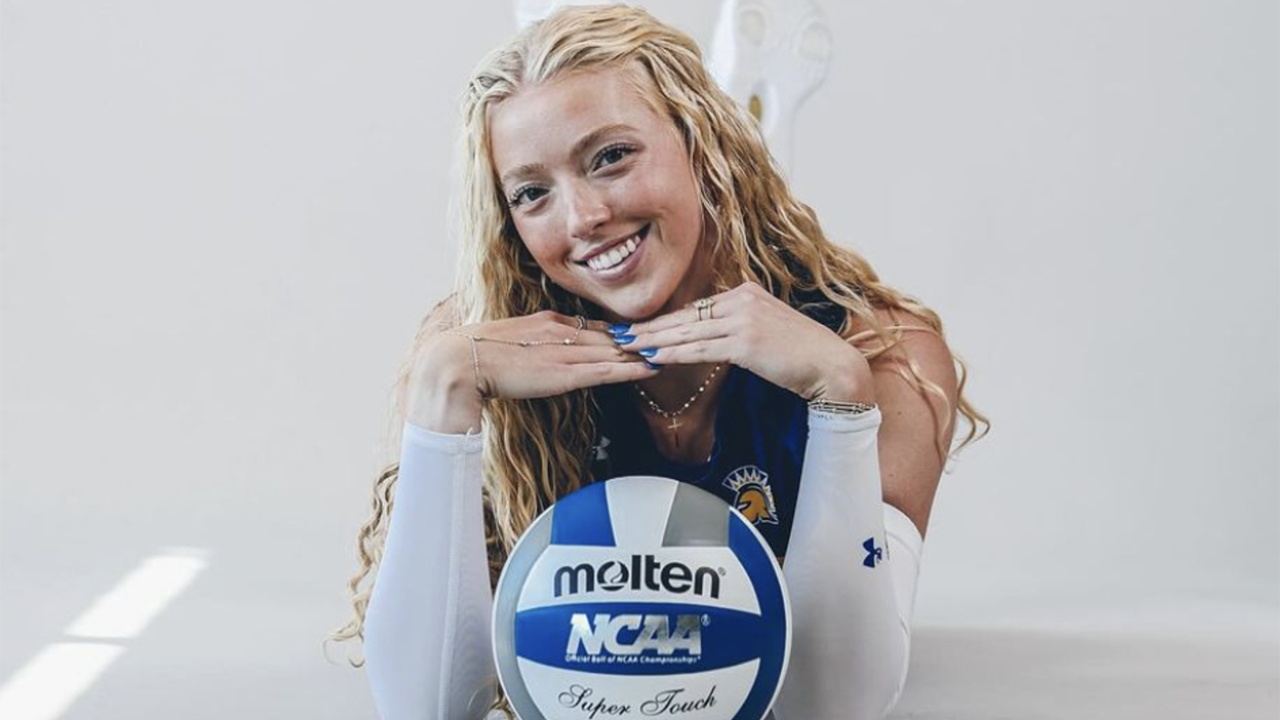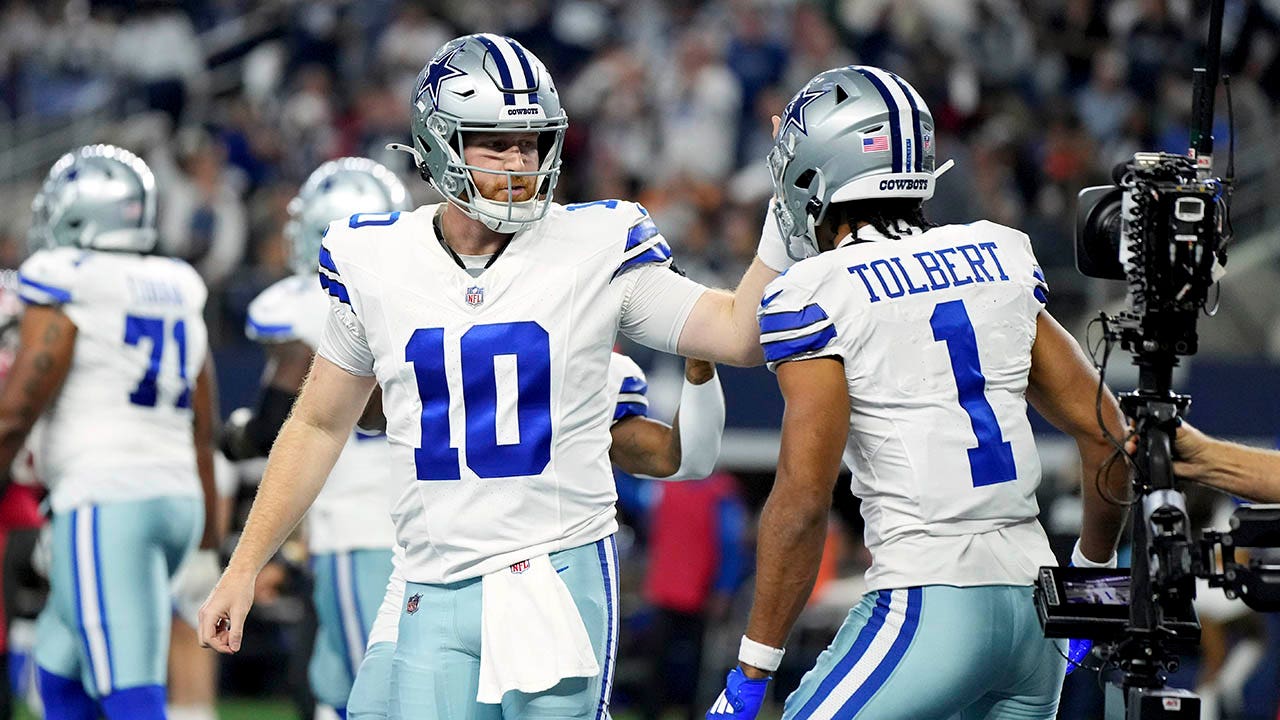
SAN FRANCISCO — If shooting is an art form, then Chris Hines is a sculptor of gilded frames. A basketball craftsman. A steward of strokes.
As an assistant coach for the Minnesota Timberwolves, he watches his latest masterpiece from the sideline: the shooting of Anthony Edwards.
“The crazy thing now, and it sucks for me,” Hines said, “I know when it’s not going in. So I’m watching from the bench like, ‘Damn it!’ as soon as it leaves his hands.”
His pupil doesn’t have such issues.
“I think I’ma make that b—- every time. I’m not gon’ lie,” Edwards said, flashing that soda-commercial smile from the visitors locker room at Chase Center on Sunday.
Embedded in the braggadocio is evidence of his sophistication. To be clear, Edwards can feel when his form goes awry and a miss is likely. But he’s gotten his mechanics to a point where he doesn’t feel that often.
“The majority of the time,” he said, “when it leaves my hand, I’m like, ‘Damn, that b—- felt good.’ Because I’ve been working on it, man. I’m not even being funny. I’ve been working on my trey ball so much. … I’m happy where it’s at.”
Behind all of his flair, Edwards’ diligence is visible in his form. Though his magnetism suggests superstardom comes easy, his vastly improved shooting underscores a maniacal work ethic.
This art has functionality. Edwards left the Bay Area this week — after splitting a two-game series at the Golden State Warriors — with the most made 3-pointers in the NBA at 103, and his 241 attempts were one behind the Boston Celtics’ Jayson Tatum for the most 3s taken as of Tuesday morning. Just over a quarter of the way through the season, Edwards is one of the best 3-point shooters in the league — a potent counter to his reputation for attacking the rim.
But do not miss the aesthetics of his polished jumper. Appreciate the artistry of Edwards, the engineering of Hines.
It perhaps goes missed because of Edwards’ highlight dunks and viral quotes. But he has developed quite the picturesque shot.
“Hell yeah,” Edwards said. “Super pretty. Shout out to C. Hines.”
3rd player in NBA history to hit 100 threes in first 23 games.
special. 🐜 pic.twitter.com/S9JCNRq95s
— Minnesota Timberwolves (@Timberwolves) December 9, 2024
The springs hidden in his legs are already alluring. He just floats, or so it seems, as if time slows when he’s in the air. Edwards rising for a jumper looks as if something cool is unfolding. He has already developed a classically attractive midrange.
The mechanics of his jumper have gotten much cleaner. It’s an efficient transition from pickup to release. Smooth. Effortless. Contrary to the shot of typical leapers, who reach the peak of their jump before unfurling something clunky. Edwards has worked on his form until it’s one fluid motion, consistently replicated, capped with a portrait-worthy follow-through and a snap of the net.
Ant-Man has authored another avenue for awe. One of the league’s most captivating players added to a bag of brilliance already brimming with personality.
“It’s not the prettiest,” he declared, giving the nod to Kevin Durant, Steph Curry and Klay Thompson. “They’ve got some pretty-ass jumpers. I’m not trying to have the prettiest jumper. I just want it to go in. Yeah, it looks good. But as long as it goes in, it looks better.”
However, beauty comes with a cost. For Edwards, it was paid through a process as methodical as it has been relentless.
Hines and Edwards pieced it together as a long-term project. Like so much with Edwards, his capacity was obvious. The talent drips off him like Jheri curl juice. The last four years were dedicated to harnessing his all-world abilities, as will be the next 10 years.
Edwards resisted at first. Some days, he would despise Hines, the torturous teacher.
“He hated me,” Hines said with a proud smile. “From the beginning. He’s like, ‘C. Hines, you not finna change my game.’ I’m not trying to change your game. Let me fine-tune it, and you’ll be fine.”
Hines earned Edwards’ trust by not changing the canvas but appreciating it. Edwards often heard what he couldn’t do, how he had to change — people steadily telling him how to paint his game. Hines instead affirmed Edwards only needed refinement, not reconstruction. They went to work on the structure, framing his shot around the game that made him special.
Hines began by cleaning up Edwards’ strengths. His handle. His finishing packages. His footwork. His touch at the rim. Those were foundational elements on which to build.
“He already had a pretty decent, solid, strong shot,” Hines said. “We just wanted to tighten up everything around his shot. Small stuff. … How is he picking up into his pocket? Is it clean? How do you find the laces without looking for ’em? Small things of that nature. So tightening all that stuff up, it’s been really fun to watch the process.”
The shots are too incessant to be counted, the hours too blurred to be logged. Shooting is a meticulous craft. It’s feel and form. Technical and creative. It remains true to the uniqueness of the shooter while beholding universal laws.
Hines went to work simplifying Edwards’ shooting stroke. First, they had to break his habit of dropping the ball too low. Now, by sheer muscle memory, his process begins with the ball near his navel.
Then they amended his high release. Edwards had a long range of motion, lifting the ball from his crotch to behind his head, creating plenty of opportunity to disrupt the result. The longer one’s form, the harder to replicate.
So by raising the starting point and bringing forward the release point, his motion became more efficient.
Another thing Hines fixed: Edwards’ habit of bringing the ball close to his body, restricting his range of motion. Hines drilled him to keep his elbows L-shaped instead of V-shaped so as not to lose power and flow. Hines ingrained in Edwards the need to keep his elbow over his eyebrows at the top of his form.
The follow-through was another significant component. Edwards now has a pronounced snap of his wrist, as if he’s dipping his hand into the rim. It gives his ball an emphatic spin that splashes the net.
“We be in the gym four or five times a day just shooting,” Edwards said. “Just shooting. Just shooting. So I’ve been trying — trying to perfect it. Because when I came in the league, the main thing was, ‘He could get downhill, but he can’t shoot. He can’t shoot. He can’t shoot.’ So I’ve been trying to knock that off my name for a long time. It’s still kind of on it a little bit, but I feel like I’m trending in the right direction.”
Last month, Edwards sent a voice message to Curry, seeking to glean some off-the-ball wisdom from his Team USA homie. This was after a summer of picking the brain of Durant, his favorite player.
The threat of Edwards’ aggressive drives, which have produced a montage of highlights, prompted defenders to back off him, conceding the jumper to prevent the poster. His rise to an MVP candidate increased the amount of double-teams he faces.
Thus, his next level of growth is being a threat off the ball. The cadence of dribbling into a shot is much different without the rock. Keeping the same form while catching and shooting requires repetition and precision drilling.
Edwards said he wants to shoot well enough for long enough that his pump-fakes get defenders in the air, opening lanes for his drives.
“In order for me to be able to score without the ball,” Edwards said, “I’ve got to be able to shoot. You know what I’m saying? Make ’em respect it. … Just being ready to shoot on the catch, that makes you another threat on the offensive end. Because guys gotta respect it now because I want to catch and shoot. So now if you run me off the line, now I’ma get to where I really want to go, which is downhill.”
This takes thousands of shots, hours and hours, for years and years. Hines didn’t want to rush the process. He was intentional about not skipping steps, mastering a skill before advancing to the next one.
The pursuit of grandeur is antithetical to haste. A masterpiece transcends time by being committed to quality.
A player has to want this. Really want it. For this level of improvement, the grind is inescapable. The amount of work Edwards invests is illustrated when he pulls up. Suspended in air. Fluid mechanics. Pretty rotation. Silky splash. His weakness has become a work of art. You can tell by how it was framed.
(Top illustration: Meech Robinson / The Athletic; photo: Adam Pantozzi / NBAE via Getty Images)











